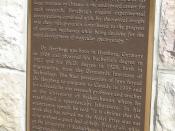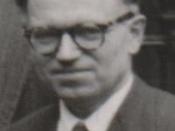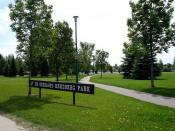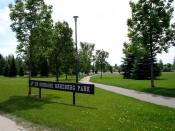Gerhard Herzberg was born in Hamburg, Germany, on 25 December, 1904. In 1929 he married Luise Herzberg and soon had two children. Luise died in 1971. Herzberg received early training in Hamburg while studying physics at the Darmstadt Institute of Technology and obtained his Dr. Ing degree in 1928 of H. Rau who was a pupil of W.Wien who was known for his discoveries regarding the laws governing the radiation of heat and was also a noble prize winner. In 1935, Herzberg was forced to leave Germany and came to Saskatoon, Canada where he worked as a guest professor in the University of Saskatchewan. In 1948 he became principle research officer and soon was made director of the division of physics in national research council. By 1955, the Division was divided into 2 sections and Herzberg remained director of pure physics until he was appointed distinguished research scientist in the recombined division of physics in 1969.
Herzberg's main contributions are to the field of atomic and molecular spectroscopy. His colleagues and he were able to determine the structures of many different types of diatomic and polyatomic molecules. Herzberg also used spectroscopic studies to identify certain molecules in planetary atmospheres, comets, and interstellar space. Herzberg contributed a lot to the scientific society not just by researching and teaching, but also by taking roles as president or vice-president of several international commissions dealing with spectroscopy. He won the 1971 Nobel Prize in chemistry for using spectroscopy to discover the internal geometry and energy states in simple molecules (http://www.science.ca/scientists/scientistprofile.php?pID=8)In 1939 was elected a fellow of the royal society of Canada, and in 1951 he was elected a fellow of the royal society of London. In 1971, Herzberg received a royal medal from the society as well as a Nobel Prize in Chemistry. Herzberg passed away on March 3, 1999.
Herzberg had contributed to physics and chemistry was very important to the scientific community. HerzbergÃÂs discoveries involve the internal geometry and energy states of molecules. Herzberg became a pioneer in the field of molecular spectroscopy, the study of how atoms and molecules emit or absorb light. By analyzing spectrograms, a sort of photograph of the way a molecule emits and absorbs light, he was able to tell a lot about molecules. By measuring the distance between the lines on a spectrogram and counting how many lines there were, he was able to apply some mathematical formulas that described the energy levels and probable locations of the electrons in the molecule. A spectrogram is created with a machine called a spectrograph. It takes a beam of light created by burning the chemical you wish to investigate. The light is focused by a lens, then passed through a prism and spread out into its component parts, like a rainbow. But this rainbow is very precise and appears as dark and light vertical lines that you can measure. With this Herzberg made a mark in both physics and chemistry with the discovery of how the geometry of an atom and energy states of an atom.
Bibliography:1) http://nobelprize.org/nobel_prizes/chemistry/laureates/1971/herzberg-bio.html2) http://www.science.ca/scientistsscientistprofile.php?pID=8





